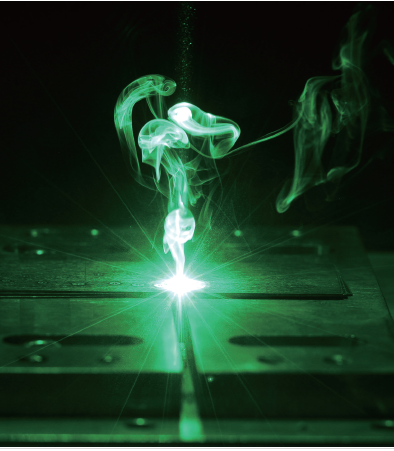
High Power Laser | Burning Laser Pointers | Green Laser Pointer

Home > Blog > Laser Applications in Battery Production
The government has introduced a series of issues such as carbon dioxide emission reduction policies and global oil resource shortages and fuel costs to boost the global demand for alternative mobile energy. The development of these alternative energy sources is in the current trend of popular electronic travel (E-Mobility) under the general trend came into being. The core themes of this trend include alternative drives, energy storage systems, lightweight design concepts, and the infrastructure for electric travel.
Since more than 40% of the cost of manufacturing an electric vehicle comes from the battery manufacturing process, it is necessary to significantly reduce the production cost of this critical component to help increase sales. In the technical level, the battery performance and production technology and other fields have also made great progress. Especially in the improvement of production technology, the great efforts to make the battery and battery prices fell faster than expected a few years ago.

In the context of the development of these core themes, there are new technical challenges, such as cutting of electrode foils; welding between different materials (such as aluminum and copper, aluminum and steel); and gasification of battery packs containing thermal elements Close welding and so on. In view of this, the advantages of high flexibility, high process speed and the ability to selectively introduce energy into the material make it very suitable for processing applications requiring high productivity and highest quality.
At the beginning of the production chain, aluminum or copper foil is first coated and compressed to produce an electrode foil. The anode needs to use copper, while the cathode uses aluminum as the carrier material. The foil is made through a coil and needs to be cut into flakes by a cutting or cutting process. The advanced technology currently used in the production process is mechanical cutting. However, the main drawback of mechanical cutting foils is that the cutting tool produces very high mechanical wear. Therefore, the tool must be replaced frequently, which will result in additional tool costs and fluctuations in the quality of the cutting.
In the next step, the taps of the electrode foil need to be welded together. Today, the most advanced technology used in this process is red laser welding or ultrasonic welding. The technical challenge in this production step is to weld thin foil with copper-copper, aluminum-aluminum or aluminum-copper and other materials. In addition, for high quality battery cells, the resistance value of the melting zone is required to be very low.
The next production step is to encapsulate the electrode foil in the housing. The shell may be hard or it may be soft (or may be called a flexible battery). After the package, the housing is closed and kept in a sealed state. The weld must be airtight. Therefore, this requires a higher welding process. As the electrical components have been inside the shell, thermal and power densities are limited. So, only a few welding techniques can meet these requirements - one of the techniques is laser welding.
In the last process of battery production, the battery compartment is filled with electrolyte. After filling, the battery inlet must be closed and the same soldering process as required in the previous step is required. In the final production step, the batteries are assembled into battery modules and battery packs. Also in this step, it is necessary to connect several batteries and modules electrically and mechanically using connection technology. Since the current provided by the battery module is much higher than that of a single cell, the cross-section must be larger, but the requirements for the weld are the same as those of the spot welding process.
One of the most challenging process steps is to achieve splashless copper welding. Especially welding copper taps or welding electrical parts within the electronic components. In order to weld such materials with little splash, there are usually two methods based on the specific application. One possibility is to use a laser with infrared wavelength, high beam quality and small spot diameter. Another solution is to use a laser with a green laser wavelength.
The advantage of infrared lasers is that it is a common technique. However, in order to achieve a larger weld width, it is necessary to set an oscillating (swing) point for the blue laser pointer spot on the workpiece. This means that you have to deal with an extra process parameter - which usually also means a more complex process. In contrast, by using a green wavelength, additional wobble can be avoided because there is no need for a small focal spot diameter caused by a higher absorption of copper by a green wavelength. Thus, the complexity of the method is significantly reduced compared to the use of infrared wavelengths, but the robustness is higher, especially in the field of battery and electronic component production, its high yield advantages and the ability to process complex parts are very big benefit.
Hot Tag
Copyright ©2019 everyonetobuy All Rights Reserved.